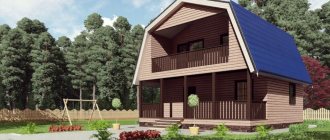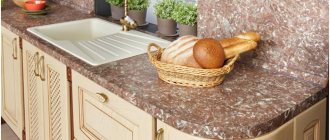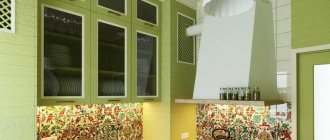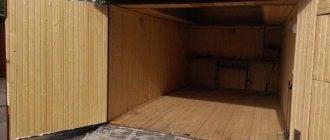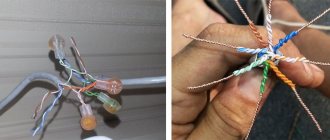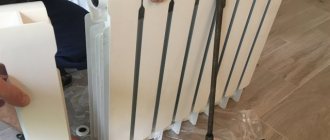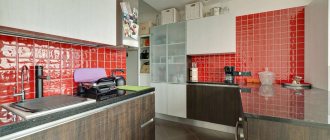Hello, dear reader! The efficiency of modern ventilation devices largely depends on the quality of assembly of its elements. If the installation technology is violated, even with competently performed aerodynamic calculations, it will not be possible to produce a reliable system.
The connection of the air ducts to each other plays an important role. Let's consider their methods, features of application in various situations.
Basement ventilation
To prevent dampness, each basement must have ventilation.
Usually, for this purpose, vents or windows are installed around the perimeter of the base, which are periodically opened for ventilation. But the best solution is ventilation through special ducts installed in smoke ventilation units and extending beyond the attic floor or roof. The exhaust pipe starts at the basement ceiling and exits with the rest of the pipes above the roof of the house. To improve draft, it is advisable to lay it next to the smoke duct of a stove or heating boiler. The larger the cross-section of the exhaust duct, the better; in any case it should not be less than 140 x 140 mm. In summer, natural draft may not be enough, and you will have to install a fan in the exhaust pipe. Air flow is usually ensured due to non-density in the enclosing structures. You can also arrange special channels with air intake either from the street or from enclosed spaces (vestibule, veranda). It is best for the supply pipe to start in the attic. The supply and exhaust ducts are located on opposite sides of the basement, the first of them near the floor, and the second near the ceiling.
Getting rid of noise
There may be a couple of possible circumstances for the noise:
- unsuccessful modification of the box,
- use of fans,
- If a corrugated pipeline is used, then it was not possible to stretch it very much at the installation stage; as a result, its surface resembles a washboard and the air space makes a lot of noise when in contact with it.
In any of the above cases, sound insulation of the ventilation duct will be useful.
In addition to this, there are a couple of ways to combat noise:
cover the box with a layer of sound insulation. This material may be self-adhesive; under such conditions, it is enough to cover the entire surface of the box,
Note! There is an option to attach sound insulation to the inner surface of the box, but in this case there is a strong possibility of the material becoming damp and fungus developing on it
- If the main source of noise is the fan, then it is possible to reinstall it using anti-vibration flexible inserts. Or a less noisy one, in addition, a special installation can be installed behind the fan itself to counteract noise,
- a plate muffler can be used,
It is possible to replace solid air ducts with flexible ones, the friction of air against their walls will be significantly reduced, and accordingly, the noise nuisance will fall through the ground.
Recommendations for choosing an air duct
Experienced specialists give a number of tips to make it easier for owners to choose products for arranging a ventilation system. Some of them:
It is best to buy products in branded stores or specialized retail outlets. In addition to the product, the kit should include instructions for use, as well as a warranty card.
If such documentation is missing, it is better to refuse the purchase. It is necessary to take into account the design of the products so that they fit organically into the interior of the room. The manufacturer is of no small importance. It is advisable to choose high-quality branded models. No need to focus on low prices
Of course, a high-quality and reliable ventilation system will be quite expensive, especially if good materials are used. However, you need to understand that high-quality models will serve for many years without complaints. Products must have sufficient performance. If the ventilation system is weak, the hood will not be able to cope well with its main task, so the exhaust air masses will remain in the room.
In addition, when choosing the components of the ventilation system, you need to take into account the main functions of the kitchen hood. The latter must meet the following characteristics:
- An attractive appearance is important so that the device fits organically into the interior, complementing it.
- Low noise level during operation.
- The ability to quickly and to the required extent remove foreign odors.
We invite you to familiarize yourself with a kitchen hood without a ventilation outlet (25 photos): models without an air duct
Price remains a significant selection criterion for homeowners; aesthetics and performance characteristics of ventilation ducts fade into the background. Flexible corrugation definitely wins here; it is much cheaper than other options, and fittings are not needed.
We will offer our recommendations on how to choose a ventilation duct for your hood:
- There are two types of channels suitable for external installation: plastic and metal.
The former are cheaper, but look worse; they are better hidden above cabinets or behind decorative cladding. On the left in the photo is the installation of a ventilation duct behind plasterboard sheathing, on the right is the gasket inside the furniture - For hidden installation, you can use any air duct: corrugated, PVC, galvanized. If you don't care about the noise level, use a cheap aluminum hose.
- In a country house, summer kitchen or veranda with a stove, connect the hood with a corrugated pipe. Plastic in such rooms quickly becomes dirty, and it is quite difficult to remove the yellowness.
- If an apartment has undergone expensive renovations, you cannot save money and spoil the interior. Match the steel frame, fittings and grille to the color of the hood. Stainless steel is perfect for a nickel-plated surface, and copper for a golden surface.
Exhaust air is removed through a pipe, which may differ in the following characteristics:
- by material;
- diameter or dimensions of the sides of the box;
- section shape;
- flexibility.
Installation
How to choose the size
It is necessary to measure the entire length with a tape measure. And take into account the route along which the air duct will pass. For example, its possible path lies through a closet, along the walls or along the ceiling. After calculations, it is worth adding about another 10 to 15 percent to the total length. This is an important point before connecting the corrugation to the hood.
In the opposite situation, if there is a shortage of material, you can attach the missing piece using tape, but this option will reduce the permeability of the air duct. This should be resorted to only in extreme cases. With the fewest angles, but with a larger degree, the hood can work much more smoothly.
How to attach a corrugation to a hood
In order to somehow connect the corrugation to the hood, you will need:
- corrugated pipe
- self-tapping screws
- clamps for fixing the sleeve or soft wire
- ventilation grille or adapter
- silicone sealant
- adapters, there was no corrugation of a suitable size
How to attach the corrugation to the hood after all the tools are ready:
- Before work, you should clean the ventilation in the apartment
- To begin, stretch the corrugation along its length and check the component elements. Avoid kinks, then the air draft will remain good.
- Use sealant to lubricate the hood neck
- Put on the corrugation and secure it with a clamp; if there is none, then wrap it with wire.
- It is necessary to lay it this way until the end of the ventilation hole.
- Fix the ventilation grille with self-tapping screws
- Then put on the corrugation with sealant
- Secure the work with a clamp
- Check the exhaust system by connecting the hood to the mains. This is done as follows: turn on the hood at maximum power, now take a sheet of paper and bring it from below to the grille. A sign of correct mounting is that the leaf is held, which means that air is being sucked in. That's it, the problem of how to put the corrugation on the hood is solved.
REFERENCE! Do not wipe the outer surface, this will relieve you of unwanted odors.
You need to know that a ventilation hole is required. The shaft cannot be closed completely.
If you don’t want to figure out how the corrugation is attached to the hood, then you can simply order professional installation. Especially if the kitchen was made together with a custom-made hood. Then, installation of the corrugation for the hood may not proceed according to the standard scheme.
Section of plastic air ducts and their dimensions
Plastic boxes for ventilation are made:
- Round section.
- Rectangular section (rectangles and squares).
Each type is hard and flexible. Rigid boxes are cast in special molds. Their main characteristic (except for geometric dimensions) is wall thickness. In order for the plastic air duct to keep its shape, the wall thickness must be 3 mm. Thinner ones bend, thick-walled ones have more weight and a much higher price.
The second type is flexible plastic air ducts. Made in the form of corrugation. The wire frame is wrapped in a layer of plastic so that the wire itself is sealed in plastic. Such air ducts are easier to install, since they can be bent at any angle.
Semi-rigid corrugated air ducts
The length of one piece of corrugated plastic pipe for pipe ventilation is up to 2.5 meters, so short routes can be made exclusively from one single piece. Installation is very simple: fastened at both ends, laid out along the route, secured in several places. It is advisable to stretch the corrugation as much as possible to reduce wall unevenness and air flow resistance.
But even in a well-stretched corrugation, due to uneven walls, air movement is difficult. Therefore, under equal conditions, corrugated air ducts are installed in larger sizes. In addition, dirt, grease, and dust accumulate faster on an uneven surface. The walls are very thin and have very little mechanical strength. Semi-rigid options are more reliable (as in the photo above). They bend worse, but have higher reliability.
Cross-section of round plastic air ducts
The most common round plastic air ducts are:
- 100 mm;
- 125 mm;
- 150 mm;
- 200 mm. Both round and rectangular plastic ducts can be produced in larger sizes
But there are also much larger sizes - up to 2.4 meters in diameter - for industrial premises. Round ventilation pipes are sold in sections of 500 mm, 1000 mm, 1500 mm, 2000 mm, 2500 mm.
Section of rectangular ventilation pipes
Rectangular plastic air ducts for domestic use come in the following sizes:
- height - 55 mm, 60 mm;
- width - 110 mm, 122 mm, 204 mm;
- length - 350 mm, 500 mm, 1000 mm, 1500 mm, 2000 mm and 2500 mm;
- wall thickness - 2-8 mm. Example of dimensions of plastic rectangular pipes for ventilation
The larger the cross-section of the plastic pipe for ventilation, the thicker its walls are. This is necessary to ensure that the products do not change geometric dimensions. To save on shorter walls (in picture a), the thickness can be smaller (2-3 mm, for example), and the wider part (indicated b in the photo) is made thicker - 3-4 mm.
Which is better: round or rectangular duct?
What shape of air ducts is better? Round or square? If we take into account throughput, then round ones are better. In them, vortex flows encounter less resistance, and the movement of air masses is faster. In rectangular corners, the corners remain practically unused. Therefore, rectangular ones are installed with a larger cross-sectional area than round ones.
In this option, even the ventilation duct laid “along the top” is almost invisible
Despite the worse characteristics, rectangular plastic pipes are more often used for ventilation. It’s easier to hide them by placing them low above wall cabinets, for example. Also, when installing a suspended or suspended ceiling, they require a smaller height, since there are flat and wide models. Even if there is no false ceiling and there is nowhere to hide the ventilation duct, a rectangular box at the junction of the wall and ceiling looks better than a round one.
What is corrugation and why is it needed for exhaust devices?
In kitchen exhaust systems, corrugated pipes are used as air ducts through which combustion products and evaporations resulting from cooking are evacuated into the ventilation shaft. The devices differ in diameter, length and material from which they are made. Corrugation is made from galvanized and stainless steel, aluminum, and various polymers. Products for exhaust gas removal have a round or square cross-section. It is selected taking into account the shape and size of the hood neck, as well as the ventilation duct itself. Corrugated pipes are also used to remove burnt gases in columns and mounted boilers.
Gas water heater exhaust system
Forced exhaust systems prevent the spread of unpleasant odors that form in the kitchen during the combustion of organic compounds. In addition, there is no need to open windows to check the kitchen, and grease vapors do not settle on the cladding, furniture and ceiling, so the room is always kept tidy and clean.
Types and materials for the production of plastic pipes
There are several types of modern plastics:
- Polyvinyl chloride (PVC).
- Polyurethane.
- Polypropylene.
Each has its own advantages and almost all have one single disadvantage.
Use of polypropylene pipes for ventilation of an industrial building
Polyvinyl chloride (PVC)
This is the cheapest, lightest and most durable option, easily processed both industrially and at home. Under normal climatic conditions, it is practically eternal and harmless: it decomposes, if not hundreds, then certainly decades, so that ventilation ducts and various products made from it will outlive the house itself.
But there is one strict limitation in use. This plastic contains chlorine, and the decomposition temperature of PVC (160-180°C) is lower than the plasticity temperature (200-220°C). Therefore, it cannot be formed using a torch and, especially, used where relatively high temperatures are used.
Round polyvinyl chloride (PVC) ventilation pipe
During decomposition, chlorine compounds and, first of all, HCl will be released. This gas with moisture forms hydrochloric acid itself, therefore it is dangerous for the eyes and respiratory tract, although in all other respects it is simply unpleasant or almost invisible.
Thus, polyvinyl chloride is an ideal plastic for ventilation, partially excluding the kitchen, water heater, fireplace and those places where temperatures above 120 ° C can occur (this is considered to be the “upper limit” for human safety).
Rectangular flat PVC pipes for arranging air ducts
Polyurethane
This plastic differs little from PVC, but can easily withstand temperatures up to 280°C. At higher temperatures, decomposition begins with the release of nitrogen compounds, which is many times more dangerous than chlorine compounds.
Its relative disadvantage is its high cost, but it combines two seemingly incompatible factors: ductility and wear resistance. The ductility of polyurethanes exceeds the resistance of granite and steel to fracture stresses. The finished polyurethane product can be bent an infinite number of times - it will not crack and will retain its original shape as soon as the tension is removed.
Polyurethane is ideal for household temperature parts, especially where shifts and distortions are possible: coupling rings, all kinds of pipes and areas where there may be high household temperatures.
Polyurethane hose for installation of exhaust ventilation systems
Polypropylene
This plastic is ideal for molding. Already at 180°C it is amazingly flexible, so any pipe can be twisted even just in hot steam, and can be bent at any angle with a torch. At the same time, it is durable, and at high temperatures it does not emit anything dangerous (impurity dyes or special additives can be dangerous). It is in the middle price category, but sufficient to make from it not only components of plastic ventilation systems, but also heating radiators.
Polypropylene is a relatively expensive but universal safe plastic.
Ventilation pipes and components made of polypropylene
Calculation of the cross-section of air ducts using the method of permissible velocities
Calculation of the cross-section of the ventilation duct using the permissible speed method is based on the normalized maximum speed. The speed is selected for each type of room and duct section depending on the recommended values. For each type of building, there are maximum permissible speeds in the main air ducts and branches, above which the use of the system is difficult due to noise and strong pressure losses.
Rice. 1 (Network diagram for calculation)
In any case, before starting the calculation it is necessary to draw up a system plan. First you need to calculate the required amount of air that needs to be supplied and removed from the room. Further work will be based on this calculation.
The process of calculating a cross section using the permissible velocity method simply consists of the following steps:
- An air duct diagram is created, which marks the sections and the estimated amount of air that will be transported through them. It is better to indicate on it all the grilles, diffusers, cross-section changes, turns and valves.
- Based on the selected maximum speed and amount of air, the cross-section of the air duct, its diameter or the size of the sides of the rectangle are calculated.
- Once all the system parameters are known, you can select a fan of the required performance and pressure. The selection of a fan is based on calculating the pressure drop in the network. This is much more difficult than simply selecting the cross-section of the air duct for each section. We will consider this issue in general terms. Because sometimes they simply select a fan with a small margin.
To calculate, you need to know the parameters of the maximum air speed. They are taken from reference books and normative literature. The table shows values for some buildings and areas of the system.
Standard speed
| Building type | Speed on highways, m/s | Speed in branches, m/s |
| Production | up to 11.0 | up to 9.0 |
| Public | up to 6.0 | up to 5.0 |
| Residential | up to 5.0 | up to 4.0 |
The values are approximate, but allow you to create a system with minimal noise.
Fig. 2 (Nomogram of a round tin air duct)
How to use these values? They must be substituted into the formula or nomograms (diagrams) used for different shapes and types of air ducts.
Nomograms are usually given in regulatory literature or in the instructions and descriptions of air ducts from a specific manufacturer. For example, all flexible air ducts are equipped with such circuits. For tin pipes, data can be found in the documents and on the manufacturer’s website.
In principle, you can not use a nomogram, but find the required cross-sectional area based on air speed. And select the area according to the diameter or width and length of the rectangular section.
Example
Let's look at an example. The figure shows a nomogram for a round air duct made of tin. The nomogram is also useful in that it can be used to clarify the pressure loss in a section of the air duct at a given speed. This data will be needed later to select a fan.
So, which air duct to choose on the network section (branch) from the grille to the main line, through which 100 m³/h will be pumped? On the nomogram we find the intersection of a given amount of air with the maximum speed line for a branch of 4 m/s. We also find the nearest (larger) diameter not far from this point. This is a pipe with a diameter of 100 mm.
In the same way we find the section for each section. Everything has been selected. Now all that remains is to select the fan and calculate the air ducts and fittings (if necessary for production).
Section of plastic air ducts and their dimensions
Plastic boxes for ventilation are made:
- Round section.
- Rectangular section (rectangles and squares).
Each type is hard and flexible. Rigid boxes are cast in special molds. Their main characteristic (except for geometric dimensions) is wall thickness. In order for the plastic air duct to keep its shape, the wall thickness must be 3 mm. Thinner ones bend, thick-walled ones have more weight and a much higher price.
The second type is flexible plastic air ducts. Made in the form of corrugation. The wire frame is wrapped in a layer of plastic so that the wire itself is sealed in plastic. Such air ducts are easier to install, since they can be bent at any angle.
Semi-rigid corrugated air ducts
The length of one piece of corrugated plastic pipe for pipe ventilation is up to 2.5 meters, so short routes can be made exclusively from one single piece. Installation is very simple: fastened at both ends, laid out along the route, secured in several places. It is advisable to stretch the corrugation as much as possible to reduce wall unevenness and air flow resistance.
But even in a well-stretched corrugation, due to uneven walls, air movement is difficult. Therefore, under equal conditions, corrugated air ducts are installed in larger sizes. In addition, dirt, grease, and dust accumulate faster on an uneven surface. The walls are very thin and have very little mechanical strength. Semi-rigid options are more reliable (as in the photo above). They bend worse, but have higher reliability.
Cross-section of round plastic air ducts
The most common round plastic air ducts are:
- 100 mm;
- 125 mm;
- 150 mm;
- 200 mm.
But there are also much larger sizes - up to 2.4 meters in diameter - for industrial premises. Round ventilation pipes are sold in sections of 500 mm, 1000 mm, 1500 mm, 2000 mm, 2500 mm.
Section of rectangular ventilation pipes
Rectangular plastic air ducts for domestic use come in the following sizes:
- height - 55 mm, 60 mm;
- width - 110 mm, 122 mm, 204 mm;
- length - 350 mm, 500 mm, 1000 mm, 1500 mm, 2000 mm and 2500 mm;
- wall thickness - 2-8 mm.
The larger the cross-section of the plastic pipe for ventilation, the thicker its walls are. This is necessary to ensure that the products do not change geometric dimensions. To save on shorter walls (in picture a), the thickness can be smaller (2-3 mm, for example), and the wider part (indicated b in the photo) is made thicker - 3-4 mm.
Which is better: round or rectangular duct?
What shape of air ducts is better? Round or square? If we take into account throughput, then round ones are better. In them, vortex flows encounter less resistance, and the movement of air masses is faster. In rectangular corners, the corners remain practically unused. Therefore, rectangular ones are installed with a larger cross-sectional area than round ones.
In this option, even the ventilation duct laid “along the top” is almost invisible
Despite the worse characteristics, rectangular plastic pipes are more often used for ventilation. It’s easier to hide them by placing them low above wall cabinets, for example. Also, when installing a suspended or suspended ceiling, they require a smaller height, since there are flat and wide models. Even if there is no false ceiling and there is nowhere to hide the ventilation duct, a rectangular box at the junction of the wall and ceiling looks better than a round one.
Pros and cons, scope
Plastic air ducts are perceived negatively by many, as they are not sure that plastic does not emit harmful substances during operation. Poor quality plastic may be unsafe, but even household appliances contain so many plastic parts that this consideration seems irrelevant. For example, in a kitchen hood with filters, most of the components are made of plastic. And here are the most difficult operating conditions - high temperature, large amounts of fat, evaporation of chemically active substances.
Even open laying of plastic pipes does not spoil the appearance
In general, experts recommend installing plastic on exhaust ventilation ducts. There are no restrictions here. But for the inflow, you need heat-resistant ones made of special plastic. Especially if the inflow is heated or recuperated.
Where can I use it?
Another reason why plastic ducts are not recommended is fire service concerns. There have been cases where permission to use gas equipment was not signed if the ventilation was made of plastic. But it was a frame house, and there the requirements are different. If in doubt, it is best to check with your local fire inspector. In general, there are recommendations in regulatory documents.
Extract from SNiP 41-01-2003
According to SNiP 41-01-2003, paragraph 7.11, plastic air ducts can be used in low-rise residential, public, administrative and industrial buildings of category D. They cannot be laid in basements, undergrounds, attics and technical floors, in rooms with regulated fire safety conditions.
Advantages and disadvantages
Plastic air ducts have both supporters and opponents. Their main disadvantages:
- Flammability. Everything is clear here. Only metal air ducts do not spread fire. Although not all plastics burn and spread combustion, such materials with “reduced” flammability are expensive. Therefore, plastic air ducts are allowed only in one-story houses.
- The accumulation of a static charge, which leads to the accumulation of dust (it can flare up again). In fact, much more dust accumulates in corrugated areas. To reduce its amount, it is necessary to install a plastic air duct after completing “dusty” construction work and install filters that catch most of the dust. In addition, plastic ventilation pipes are treated with a special compound. It forms a film on the surface that prevents the accumulation of static charge.
An example of using plastic air ducts to connect a kitchen hood - With low quality workmanship, thin walls or a large cross-section, gaps may form at the joints due to changes in geometry. This can be fixed, but there is such a drawback.
These are the disadvantages of using plastic ducts. There are more than enough advantages:
- Easy installation. The presence of fittings and shaped elements allows you to create a system of any configuration. Plastic is easy to cut and weighs little.
- Due to the perfectly smooth walls, the air encounters less resistance.
- Easier to ensure tightness. For reliability, the joints can be coated with sealant.
- Modern plastic air ducts are joined using end-to-end joints without overlaps, which reduces resistance to air movement.
- Low noise level. With a capacity of up to 100 cubic meters per minute, air movement is almost silent.
- Not subject to corrosion.
This set of shaped elements allows you to create a ventilation system of any complexity from plastic pipes
Overall, plastic ductwork is not a perfect solution, but the ease of installation and good performance outweigh the disadvantages. In general, experts recommend installing plastic on exhaust ventilation ducts. There are no restrictions here. But for the inflow, you need heat-resistant ones made of special plastic. Especially if the inflow is heated or recuperated.
Also, when selecting, you should proceed from the operating conditions. For example, it makes sense to use a plastic air duct for an exhaust ventilation duct from wet rooms, since galvanized ones are susceptible to corrosion, and stainless ones are very expensive.
Types of products
It is difficult to say at first glance which plastic pipes will be better used for ventilation in a private house (apartment), because there is no axiom for this case. You can only rely on experience to understand what will work best in each specific situation. To do this, you need to study in detail all possible types of plastic pipes.
PVC pipes are easy to install, lightweight and cheap. Today, PVC is the most popular material for arranging household ventilation. The popularity of such equipment among owners of small houses and apartments is due to its low cost and ease of operation.
The products are resistant to ultraviolet radiation and have an operating temperature range from 0 to +80 degrees. The models are characterized by strength and tightness, however, like all plastic products, they have their drawbacks:
- cannot tolerate sub-zero temperatures;
- over time they crack;
- structures cannot be heated to more than +160 degrees.
Polypropylene pipes
In the Russian Federation, such structures began to be manufactured during the crisis. Polypropylene is a good dielectric, resistant to aggressive environments, and non-hygroscopic. In terms of strength, it is 4 times superior to polyethylene.
Polypropylene products are in demand and are considered consumer structures for the following reasons:
- availability of tools;
- low cost;
- ease of installation.
This is a cheap but high quality pipe. Due to price indicators, domestic products are ahead of some manufacturers. But European standards consider polypropylene pipes to be a passed stage in construction technology. According to certain criteria, the material is obsolete, in addition, it is not resistant to fire.
Main disadvantages:
- When exposed to low temperatures, polypropylene becomes brittle. That is why it is permissible to use it exclusively in warm rooms.
- The main disadvantage of the material is combustion and melting when temperatures rise to +90 degrees.
- To increase combustion resistance, manufacturers use special antistatic and non-flammable additives.
Not every manufacturer can boast of an assortment of pipe attachments, as well as a well-thought-out docking system. As a result, sagging appears and additional noise occurs during operation. In addition, all work with polypropylene must be carried out very carefully. This is due to the fact that at high temperatures the products expand greatly.
Such designs are in most cases in demand among novice craftsmen and those who cannot afford to purchase professional materials. Of course, with a limited budget, such pipes are the best option.
Polyethylene and fluoroplastic air ducts
This type of pipe is used mainly in houses where people live irregularly - country houses and country houses. Polyethylene products with an internal protective layer can be laid both inside and outside; holes for connection can be easily made in them.
The material is more resistant to temperature changes, unlike PVC. The temperature range varies from -50 to +85.
Manufacturers provide consumers with a choice of designs with antistatic and ultraviolet coating. The composition contains black soot, which distinguishes polyethylene aggregates from similar plastic products.
Fluoroplastic today is the most durable material that is resistant to the environment and external forces. Often, structures are used to install a supply and exhaust ventilation system. Products can withstand:
- temperature effects in the range from -40 to +140 degrees;
- contact with acids, alkalis and vapors.
PTFE structures are used for the inflow and outflow of aggressive air. The material copes well with the task. However, the higher the temperature and pressure values, the lower the operating period of the products.
What to look for when choosing air ducts?
Air ducts can be mounted outside or inside the supporting surface:
- External ventilation ducts are laid along the facades. They are distinguished by a flexible installation scheme and ease of maintenance. The system can be modified or expanded at any time. Disadvantages: need for thermal insulation, vulnerability to external factors, violation of the aesthetics of the facade.
- The built-in ones are “immersed” into the supporting surface - a wall, floor slab, beam, shaft. The main advantages of this solution are maximum strength and compact design. The channel does not take up space indoors, saving usable space. The disadvantage is that they can be laid at the construction stage. Difficult to modify later. Difficult to maintain.
In some cases, the ventilation system is equipped with external and internal air ducts, taking advantage of the first and second options. This scheme simplifies the calculation of air ducts, providing the opportunity to rebuild the system to suit any “rules” of air exchange.
Where is it used?
Installation of plastic ventilation pipes is possible in any domestic space, but places with high humidity levels and unpleasant odors especially need to be updated. For example, in a bathhouse, ventilation will prevent rapid wear of materials that lose their resistance under the influence of moisture and high temperatures, and will prevent an increase in the level of carbon monoxide and carbon dioxide. In the garage, the installation task is to remove car exhaust and fumes, dry the body, and blow out the inspection hole. In a chicken coop or other livestock area, the system ensures the elimination of harmful ammonia fumes.
Ventilation solves the same problems in a private house. There are many bacteria and viruses in the air, the number of which increases after illnesses suffered by the inhabitants of the house. Ventilating windows will not control invisible pests. This issue will be resolved only by arranging a system of air outflow and inflow channels.
Installation features
Installation of plastic air ducts is much easier than working with metal ones. You can cut plastic pipes for ventilation with a hacksaw with a metal blade or a grinder with a cutting disc. In any case, the cut is smooth, without burrs.
Ventilation option in the bathroom and toilet using rectangular plastic pipes for ventilation
Shaped elements and fastening to walls and ceilings
For turns, branches, narrowings, and expansions, there are special shaped elements - corners, tees, adapters. There are adapters from one size to another, and from round to rectangular. This is useful, for example, if you need to insert a fan. There are couplings for joining two pipes. Everything is assembled even easier than a children's construction set.
Example of ventilation from round plastic ventilation pipes
The pipes are attached to the walls or ceiling using special clamps. They are also made of plastic and are attached to the ceiling or walls using dowels or self-tapping screws. The pipes simply “snap” into the installed clamps.
Instead of plastic clamps for attaching ventilation ducts, you can use perforated plasterboard hangers. If a rectangular plastic pipe is mounted, they are secured with two dowels/screws at a distance equal to the width of the pipe. The remaining edges are folded down and secured to the side of the pipe with self-tapping screws. This method is more labor-intensive, but suspensions are cheaper. But using self-tapping screws is not the best solution. After a few years, dust will stick to them, to a piece of screw sticking out inside the air duct, which will lead to poor draft. After 8-10 years, a dust plug will form at the site of each self-tapping screw. As a result, ventilation may stop working altogether. I'll have to clean it.
Assembly Features
If it is necessary to mount air ducts on the ceiling, they are assembled in large sections on the floor, then they are “tried on” on the ceiling, and the locations for installing the fasteners are marked. Having secured the two sections, they are connected to each other. This is how the whole system comes together. It's really nothing complicated. It is difficult to design and select dimensions, but you can install the air duct according to a ready-made diagram yourself without any problems.
To ensure tightness in the system, experts recommend coating the joints with sealant. A neutral white silicone sealant is recommended. After drying, it remains elastic and does not crack from vibration, and compensates for temperature expansion.
If, when joining two elements of the system, a “pocket” is formed - the plastic does not fit well due to a mismatch in geometric dimensions, the joint is also coated with sealant and then wrapped with special metallized tape. In such cases, it is recommended to remove the “pocket” by tightening it using a self-tapping screw. This should not be done for the same reason - a dust plug will “grow” in this place, which will block the air flow.
https://youtube.com/watch?v=NBTsJcOpEWU
Tips on how to collect correctly
When assembling air ducts with your own hands, consider the following recommendations:
- the air flow should move in the direction from the living area towards the bathroom, bathroom, kitchen, but not in the opposite direction;
- try to reduce the number of turns that reduce the power of the ventilation system;
- the end of the pipe should extend approximately 50 mm into the connecting element;
- The joints of the structural elements are covered with a thin layer of special white silicone or acrylic sealant. When dry, it does not lose elasticity and does not crack due to vibration, and is able to compensate for temperature expansion.
Sources
- https://stroychik.ru/ventilyaciya/plastikovye-vozduhovody
- https://TvoiDvor.com/dom/plastikovyie-vozduhovodyi-dlya-ventilyatsii/
- https://vseotrube.ru/ventilyatsiya-i-dymohod/vozduhovody-plastikovye
- https://ventilsystem.ru/ventilyaciya/elementy/truby/plastikovye-truby-dlya-ventilyacii.html
- https://TopVentilyaciya.ru/ventilyaciya/elementy/plastikovye-truby-dlya-vozduhovodov.html
- https://kvent.ru/ventilyatsiya/gibkie-vozduhovody.html
[collapse]
